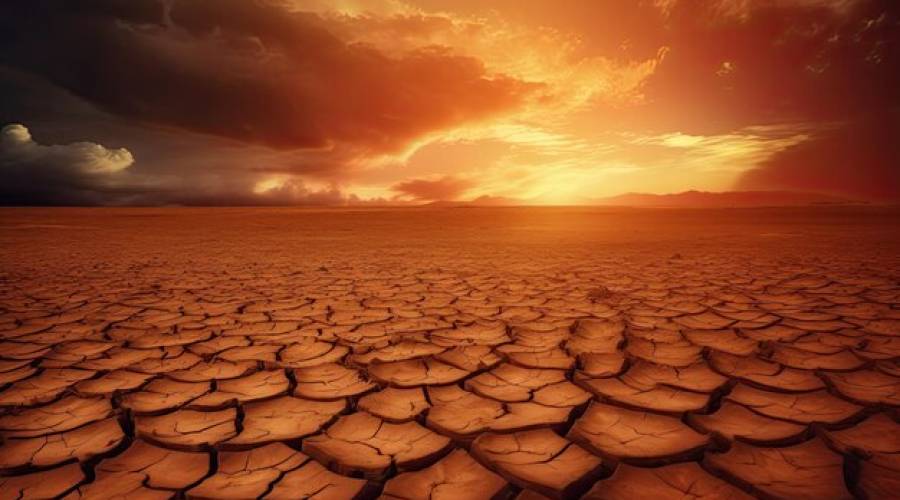
Mediterranean Tourism: Global Warming's Impact in Europe and the Middle East
Mediterranean tourism faces decline due to global warming. Rising temperatures, sea-level rise, and extreme events impact iconic destinations in Europe and the Middle East.
The Mediterranean region, renowned for its picturesque coastlines, historical sites, and diverse cultures, has long been a hotspot for global tourism. However, the increasing temperatures and changing climate patterns associated with global warming are posing significant challenges to the tourism industry in this region.
Key Findings:
Rising Temperatures and Heatwaves: As global temperatures soar, the Mediterranean is experiencing more frequent and intense heatwaves. The scorching temperatures, especially during peak tourist seasons, deter travelers seeking comfortable climates. This has led to a decline in the number of visitors to popular destinations like Spain, Italy, and Greece during the summer months.
Sea Level Rise and Coastal Erosion: Coastal cities and resorts in the Mediterranean are grappling with the impact of rising sea levels and increased coastal erosion. Iconic beaches are disappearing, and waterfront infrastructure is at risk. This not only diminishes the appeal of seaside destinations but also raises concerns about the long-term viability of coastal tourism.
Water Scarcity and Drought: Several countries in the Mediterranean, including those in the Middle East, are facing water scarcity due to changing precipitation patterns and prolonged droughts. This poses a threat to agricultural activities, landscapes, and water-dependent tourist attractions. Water shortages can lead to decreased agricultural productivity, affecting local cuisines and agricultural tourism experiences.
Wildfires and Air Quality: The Mediterranean is witnessing an increase in the frequency and intensity of wildfires, exacerbated by hotter and drier conditions. Apart from direct threats to ecosystems and communities, the resulting poor air quality can negatively impact tourism. Visitors are less likely to choose destinations with compromised air quality, affecting outdoor activities and overall travel experiences.
Case Examples:
Venice, Italy: The historic city of Venice, already dealing with rising sea levels, is facing increased flooding events due to global warming. This not only damages historical landmarks but also disrupts tourism activities. The "Acqua Alta" events, where tides inundate the city, have become more frequent, deterring tourists and impacting local businesses.
Santorini, Greece: The picturesque island of Santorini relies heavily on its stunning sunsets, pristine beaches, and unique landscapes to attract tourists. However, the region is experiencing water scarcity and reduced agricultural productivity due to changing climate patterns. This affects local industries and, consequently, the overall tourist experience.
Dubai, UAE: In the Middle East, Dubai faces challenges associated with extreme heat. As temperatures rise, outdoor activities become less attractive, impacting the city's tourism offerings. Additionally, water scarcity is a growing concern in the region, affecting the maintenance of lush green landscapes and the sustainability of tourism-related ventures.
Mitigation Strategies:
Diversification of Tourism Offerings: Destination authorities should diversify tourism offerings beyond traditional sun and beach attractions. Emphasizing cultural experiences, sustainable tourism practices, and indoor attractions can help mitigate the impact of temperature-related challenges.
Investment in Climate-Resilient Infrastructure: Governments and businesses should invest in climate-resilient infrastructure, especially in coastal areas. This includes the development of robust seawalls, sustainable water management systems, and the relocation of vulnerable structures away from the coastline.
Promotion of Sustainable Practices: Governments and tourism boards should actively promote sustainable tourism practices, encouraging businesses and visitors to adopt eco-friendly behaviors. This may involve certifications for environmentally conscious establishments and public awareness campaigns.
Adaptation and Innovation: The tourism industry should adapt to changing conditions by embracing innovative solutions. This could involve the use of advanced weather prediction systems, green technologies, and the development of climate-resilient tourism products.
The case of the Mediterranean highlights the urgent need for a comprehensive and collaborative approach to address the impact of global warming on the tourism industry. By implementing mitigation and adaptation strategies, governments, businesses, and local communities can work together to ensure the long-term sustainability of these iconic destinations, preserving their cultural and natural heritage for future generations.






